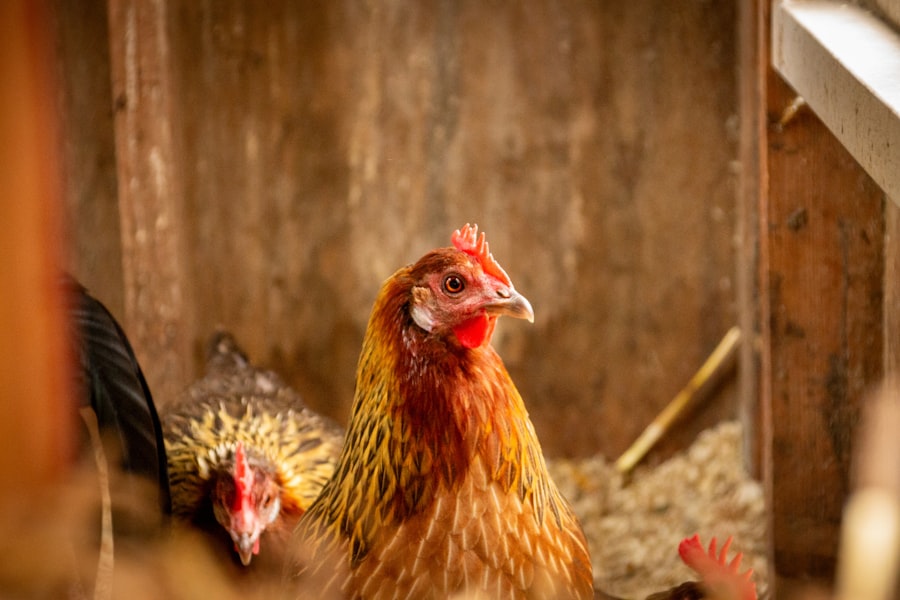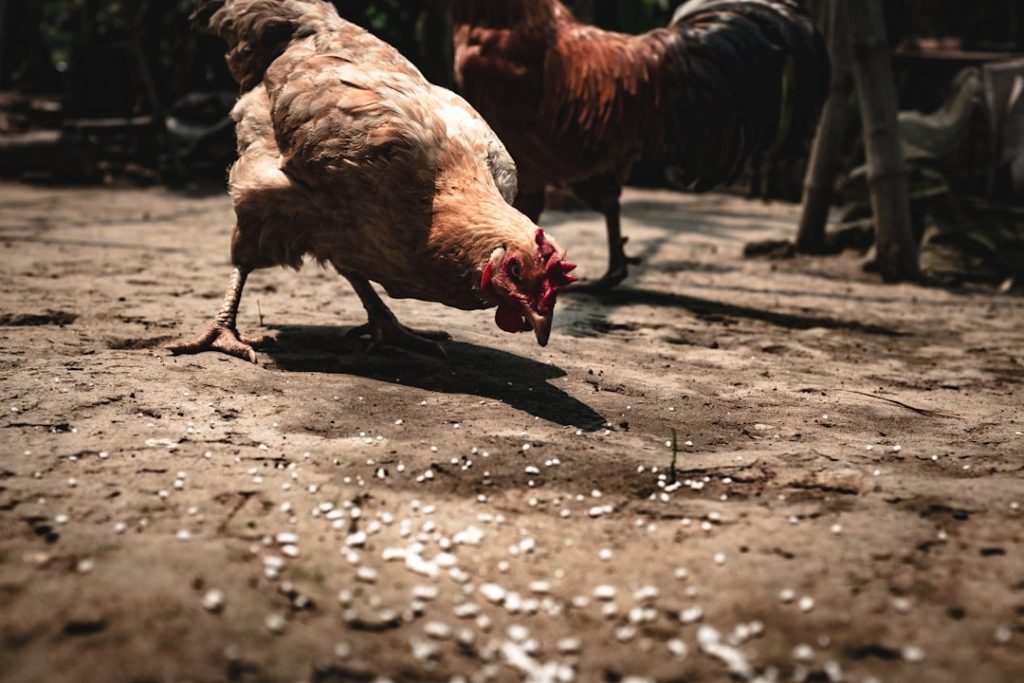Moles are a common problem for homeowners, causing damage to lawns and gardens through their underground tunneling activities. While various mole control methods exist, using chickens as a natural deterrent has gained attention. Chickens are known for their foraging behavior, which includes hunting for insects, grubs, and small rodents that moles consume.
This article examines the potential of chickens as a mole control strategy, discussing their behavior and impact on mole populations. It explores the advantages and disadvantages of using chickens for this purpose, as well as effective techniques for implementing this method. Additionally, the article covers alternative natural mole control methods, considerations for keeping chickens, and provides a comprehensive overview of this innovative approach to managing mole infestations.
Table of Contents
- 1 The behavior of chickens and their potential impact on moles
- 2 Benefits and drawbacks of using chickens to control moles
- 3 How to effectively use chickens to keep moles away
- 4 Other natural methods for mole control
- 5 Considerations for keeping chickens as a mole control method
- 6 Conclusion and final thoughts on using chickens to deter moles
- 7 FAQs
Key Takeaways
- Chickens can be used as a natural method to keep moles away from gardens and lawns.
- Chickens are natural foragers and can help control the mole population by eating insects and grubs that moles feed on.
- The benefits of using chickens for mole control include natural pest control, fertilizer production, and entertainment, while drawbacks include potential damage to gardens and lawns.
- To effectively use chickens to keep moles away, it is important to provide proper housing, food, and protection from predators.
- Other natural methods for mole control include using repellents, traps, and planting mole-resistant plants, but using chickens can be a more sustainable and environmentally friendly option.
- Considerations for keeping chickens as a mole control method include the space available, local regulations, and the commitment required for chicken care.
- Using chickens to deter moles can be an effective and sustainable method for controlling mole populations while also providing additional benefits for gardeners and homeowners.
The behavior of chickens and their potential impact on moles
Foraging Behavior and Territoriality
Chickens are natural foragers and are constantly on the lookout for insects, grubs, and small rodents to eat. Their scratching and pecking behavior can disturb the soil and expose mole tunnels, making it difficult for moles to establish and maintain their underground network. Additionally, the presence of chickens can deter moles from entering an area due to the disturbance and potential threat posed by the chickens. Chickens are also known to be territorial animals, and their presence alone may discourage moles from inhabiting an area.
Natural Deterrents
The droppings of chickens contain high levels of nitrogen, which can act as a natural deterrent for moles and other pests. This natural deterrent can help to repel moles from the area, making it an effective method for controlling their populations.
Important Considerations
On the other hand, it’s important to note that not all chicken breeds exhibit the same level of foraging behavior. Some breeds are more inclined to hunt for insects and grubs than others, so it’s essential to select breeds that are known for their foraging abilities when using chickens for mole control. Additionally, the impact of chickens on mole populations may vary depending on the size of the area and the number of chickens present. In larger areas, it may be necessary to have a larger flock of chickens to effectively control mole populations. It’s also important to consider the potential impact of chickens on other aspects of the landscape, such as gardens and flower beds, as their scratching and pecking behavior can cause damage to plants if not managed properly.
Benefits and drawbacks of using chickens to control moles

Using chickens to control moles offers several benefits, including a natural and environmentally friendly approach to pest management. Chickens can help reduce the population of moles without the use of harmful chemicals or traps, making it a safe option for both humans and the environment. Additionally, chickens provide other benefits such as producing eggs, controlling other pests like slugs and snails, and providing fertilizer through their droppings.
This multi-functional approach makes using chickens for mole control a practical and sustainable solution for homeowners. However, there are also drawbacks to consider when using chickens for mole control. Chickens require proper care and management, including providing shelter, food, water, and protection from predators.
Additionally, not all homeowners may have the space or resources to keep chickens, making it an impractical solution for some. Chickens also have specific dietary needs, and their foraging behavior may not be enough to completely eradicate mole populations in some cases. Furthermore, there is a risk of chickens causing damage to gardens and landscaping if not properly managed.
It’s important to weigh these benefits and drawbacks when considering using chickens as a mole control method.
How to effectively use chickens to keep moles away
To effectively use chickens to keep moles away, it’s important to select breeds that are known for their foraging abilities and ability to thrive in the local climate. Breeds such as Rhode Island Reds, Australorps, and Sussex are known for their excellent foraging skills and adaptability to various environments. It’s also essential to provide proper shelter and protection for the chickens, including a secure coop and fencing to keep them safe from predators.
Additionally, providing a balanced diet for the chickens will ensure they have the energy and health needed to actively forage for pests like moles. In terms of managing the chickens’ impact on the landscape, it’s important to rotate their access to different areas of the property to prevent overgrazing and damage to gardens and lawns. This can be done by using portable fencing or allowing the chickens access to specific areas at different times.
Regular monitoring of mole activity and chicken behavior will also help determine the effectiveness of using chickens for mole control. By observing where moles are active and where the chickens are spending their time foraging, adjustments can be made to optimize their impact on mole populations.
Other natural methods for mole control
In addition to using chickens, there are other natural methods for controlling mole populations that can be used in conjunction with or as an alternative to using chickens. One common method is using castor oil-based repellents that create an unpleasant environment for moles by disrupting their sense of smell and taste. Another approach is using vibrating or sonic devices that emit sound waves or vibrations that deter moles from inhabiting an area.
These devices can be placed in the ground at regular intervals to create a barrier against moles. Furthermore, creating physical barriers such as underground wire mesh or fencing can prevent moles from accessing specific areas of the property. This method is particularly effective for protecting gardens and flower beds from mole damage.
Additionally, maintaining a well-drained lawn and garden can help reduce the presence of grubs and earthworms that moles feed on, thereby making the area less attractive to moles. By combining these natural methods with using chickens, homeowners can create a comprehensive approach to controlling mole populations in a safe and environmentally friendly manner.
Considerations for keeping chickens as a mole control method

Regulations and Zoning Laws
When considering using chickens as a mole control method, it’s essential to check local regulations and zoning laws regarding keeping chickens on residential properties. Some areas may have restrictions on the number of chickens allowed or specific guidelines for coop construction and placement.
Caring for Chickens
Additionally, it’s important to consider the time and effort required to care for chickens properly, including providing food, water, shelter, and protection from predators. Homeowners should assess the size of their property and determine if it can support a flock of chickens without causing damage to landscaping or creating conflicts with neighbors.
Environmental Factors
It’s also important to consider the potential impact of weather conditions on keeping chickens, such as extreme heat or cold, as well as seasonal changes in food availability for the chickens.
Successful Integration
By carefully considering these factors and planning accordingly, homeowners can effectively integrate chickens into their pest management strategy while ensuring the well-being of the chickens and maintaining a harmonious environment.
Conclusion and final thoughts on using chickens to deter moles
In conclusion, using chickens as a natural method for deterring moles offers several benefits such as environmental sustainability, multi-functional pest management, and reduced reliance on harmful chemicals or traps. Chickens’ natural foraging behavior makes them well-suited for controlling mole populations in a safe and effective manner. However, it’s important to consider the specific needs of chickens and potential drawbacks such as landscape damage when implementing this method.
By carefully selecting appropriate chicken breeds, providing proper care and management, monitoring their impact on mole populations, and considering other natural methods for mole control, homeowners can successfully use chickens as part of a comprehensive approach to managing mole populations. Ultimately, integrating chickens into pest management strategies offers a practical and sustainable solution that benefits both homeowners and the environment.
If you’re interested in learning more about keeping chickens and their potential benefits, you might want to check out this article on how to care for goslings. It provides valuable information on raising and caring for geese, which can also be a great addition to your backyard flock.
FAQs
What are moles and why are they considered pests?
Moles are small mammals that live underground and are known for creating unsightly tunnels and mounds in lawns and gardens. They are considered pests because their burrowing can damage plant roots and create tripping hazards for humans and livestock.
Do chickens keep moles away?
There is no scientific evidence to support the claim that chickens can effectively keep moles away. While chickens may eat insects and other small pests, they are unlikely to actively hunt or deter moles from an area.
What are some effective methods for controlling moles?
Some effective methods for controlling moles include using traps, repellents, and barriers. Traps can be placed in active mole tunnels, while repellents can be applied to the soil to deter moles from digging. Barriers such as underground fencing can also be used to prevent moles from entering specific areas.
Are there any natural predators of moles?
Natural predators of moles include owls, hawks, foxes, and snakes. These predators may help control mole populations in certain areas, but their presence alone may not be enough to completely eliminate a mole problem.
Meet Walter, the feathered-friend fanatic of Florida! Nestled in the sunshine state, Walter struts through life with his feathered companions, clucking his way to happiness. With a coop that’s fancier than a five-star hotel, he’s the Don Juan of the chicken world. When he’s not teaching his hens to do the cha-cha, you’ll find him in a heated debate with his prized rooster, Sir Clucks-a-Lot. Walter’s poultry passion is no yolk; he’s the sunny-side-up guy you never knew you needed in your flock of friends!







